How Nike's 2024 Olympic Uniforms Came Together
The 2024 Olympic and Paralympic Games are less than two months away, and viewers across the world are excited to watch contestants compete and break records in Paris. For sports and fashion brands, the event represents a major branding opportunity to dress each country's delegates as they go for gold.
Nike is outfitting more than 100 federations across team and individual sports, and revealed their athlete kits with a special activation in Paris in April, to which they invited press including Fashionista. The "On Air" event opened with a monologue on the history of the brand's Air shoes, which led to the big unveiling of the 2024 Olympic uniforms on American sprinter Sha'Carri Richardson, Kenyan marathoner Eliud Kipchoge and several other athletes. Nike also announced a Blueprint footwear collection (coming in July) as well as collaborations with designers like Martine Rose, Ambush and Sacai ahead of the summer games. Serena Williams modeled the latter, while Travis Scott and veteran Brazilian soccer player Ronaldinho sat front row. Some of the pieces revealed at the event also fueled a bit of a backlash, but more on that later.
The 47-year old company has sponsored Team USA since 2006. This year, though, it's spending the most it ever has on the Olympics. (It didn't disclose exact figures.) The uniforms are a big part of it: One expects Olympic kits to incorporate country names and colors into something with a patriotic feel, but it's the technology in Nike's clothing and footwear that stands out.
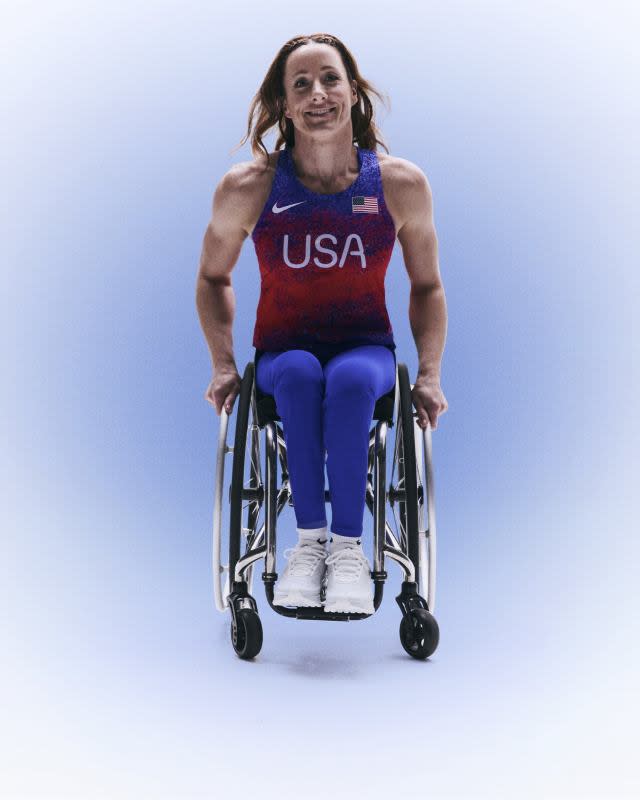
Tatyana McFadden
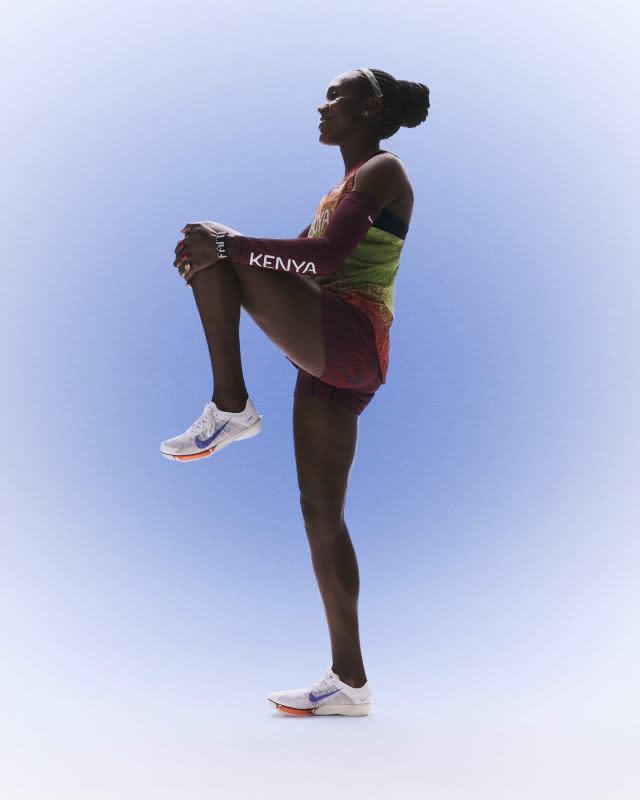
Faith Kipyegon. Photos: Courtesy of Nike
The brand has been preparing for the summer event for a few years (since before the pandemic), with a focus on fine-tuning features like Dri-Fit and Air for even better performance, testing items over Zoom and in parking lots at its Beaverton, Oregon headquarters. Athletes, from Olympians to everyday people, serve as the main sources of feedback.
"You need diversity in your pool," Kathy Gomez, Nike's vice president of footwear innovation, says, noting how it's important to be "layering in gender, size, ability and shape" into the process. "You need a certain amount of playing hours, time and intensity in these projects, but you also need the voice of an everyday athlete. Testing is a very intimate experience, getting to know them and understanding their data but also understanding them. We do everything to make the athlete feel like they're part of the process."
Nike also uses stats from the sports research labs on its 400-acre campus to inform the products via proprietary algorithms — think: taking results from a group of marathoners to optimize a digital prototype for running miles on end, before creating samples. As Vice President of Apparel Innovation Janett Nichol puts it: "Data is the new design."
"It allows us to amplify benefits we deliver, whether it's compression or breathability or weight," she says. "To make a garment, we don't have to cut it into several pieces and then put all those elements together. We're able to put data through a digital computational system, and everything comes out." (Nichol notes that "a bespoke expression," or a single athlete's personal numbers being used to create their individual uniform, is also possible.)
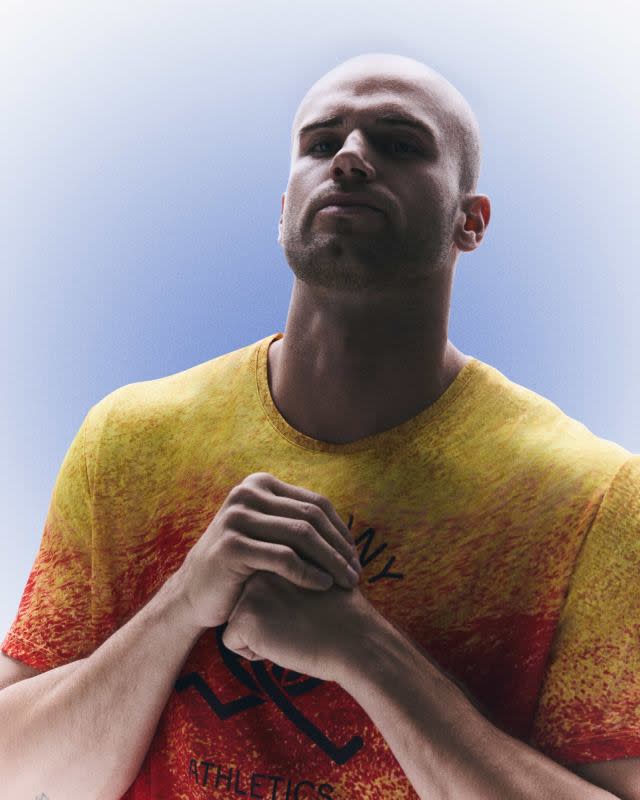
Julian Weber
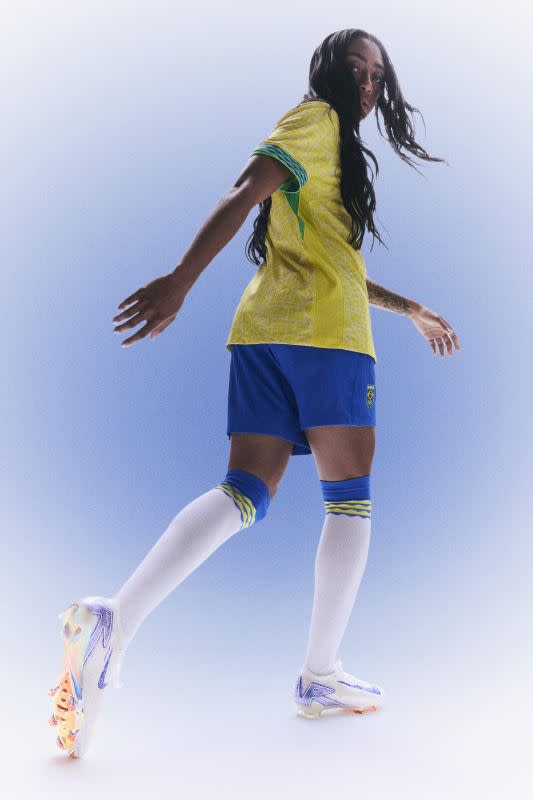
Kerolin. Photos: Courtesy of Nike
Some of Gomez's proudest shoes in the 2024 Olympic kits are the Alphafly 3 and the GT Hustle. For the latter, her team wanted to create an efficiency-based basketball shoe, one that could leave its athlete with "more left in the tank" (defined as an increase in oxygen conserved). All the right ingredients had to "be dialed in" to achieve these results: There are two Air Zoom aerosols and a full-length carbon fiber plate, and the upper is made with Flyknit in a radial pattern to contain the foot.
"If you think about efficiency in basketball, it's about holding your foot in. Containment in all directions plus comfort are two things that can be opposing. Being able to get containment that locks you in but doesn't feel like it's too tight comes from obsessing over the details," Gomez says.
Not only does Gomez appreciate the GT Hustle's mechanics, she's also proud of the development process: It was unique in that it began with a woman in mind, versus a man's foot and body (currently the status quo). About four years ago, she decided "to start every project with women," so, rather than using the swath of data and access to "elite male athletes" to "trickle down" and be applied to female athletes without consideration for their unique needs, her team did the opposite.
"It really forced the team to deeply get to know women – not just about what they want to wear on their feet, it's about what they care about, the whole athlete and the nuances," she says.
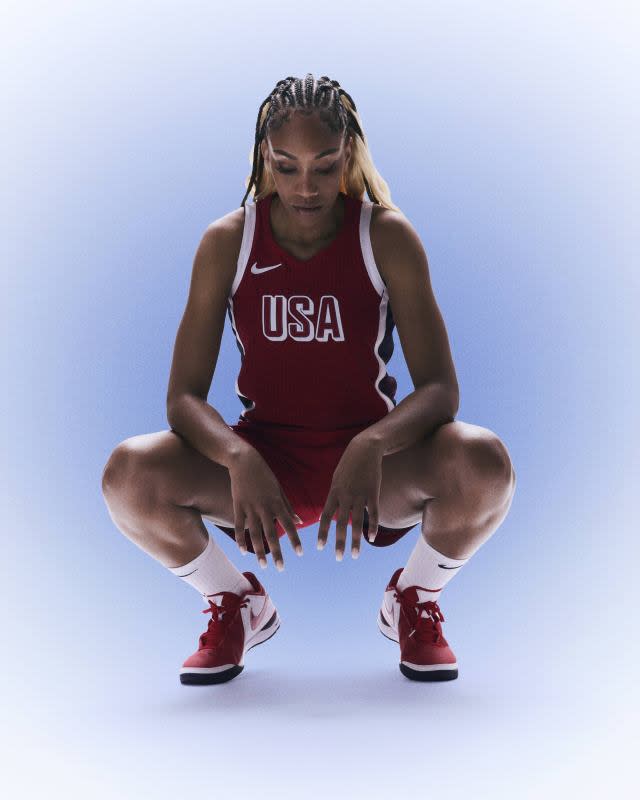
A'ja Wilson
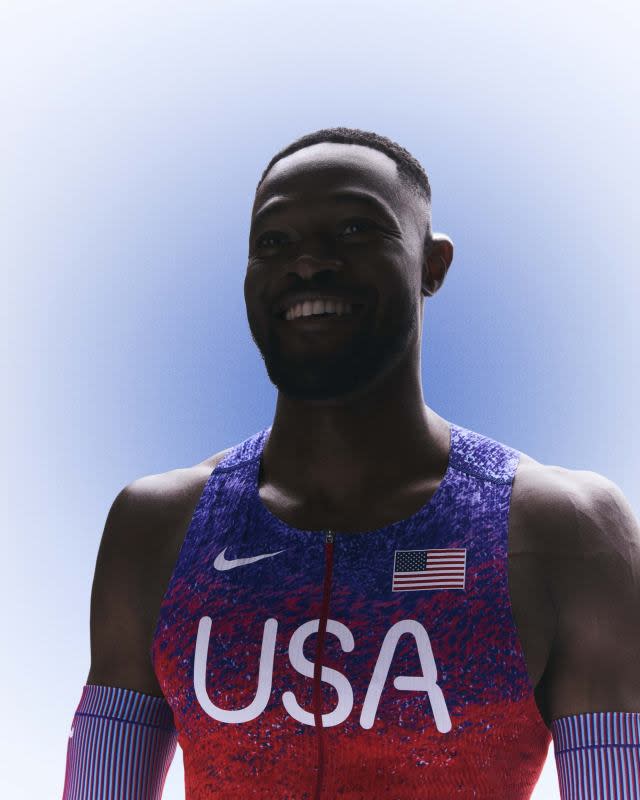
Rai Benjamin. Photos: Courtesy of Nike
While much of Nike's Olympics preparation focused on refinement, there were some sports — like breaking, which is making its debut at the 2024 Paris Olympics — that offered more room for experimentation. Nike produced and is already selling breaking gear, but it worked with athletes like Team USA's Logan "Logistx" Edra to craft Olympic-ready pieces and its first-ever breaking shoe.
"I have to make sure my shoulders and my back are covered because I'm spinning on my back and my shoulders. I have to wear pants because I go on my knees a lot and do footwork," Edra says. "For me, I have to have clothing that's kind of loose, but not too baggy because then you lose the shape and the lines of the moves. I like to balance out the bagginess."
Despite the big production and buzz around the reveal, Nike did get some backlash after "On Air." Critics commented on how the track and field uniforms on display seemed to hypersexualize female athletes, and Paralympian athletes called out the brand for not offering single-shoe sales.
In response to the former, a Nike spokesperson said there are almost 50 unique competition styles to choose from, meaning athletes won't have to compete in the skimpiest clothing if they don't want to. (Each sport Nike made uniforms for has its own assortment of options, too.) Jordana Katcher, Nike's vice president of global sports apparel, told Fashionista via e-mail: "For a sport like track and field, a sprinter may have very different needs than a javelin thrower, so our collection includes a dozen competition styles fine-tuned for specific events to ensure athletes can choose outfits that match their style and personal preference without sacrificing comfort. We also have a range of bottoms for athletes to choose from offering full to less coverage. Ultimately, the best kits ensure that athletes can perform at their best without being distracted by their apparel, helping them stay focused on the world stage."
These games aren't just Nike's investment in the world's most elite athletes: The company warned of sinking revenue in March as inflationary pressures continued, so this summer is part of a major effort to boost itself amid an increasingly competitive sportswear market.
"We make shoes and shirts, but what that embodies is everything that an athlete aspires or dreams to be," Nichol says. "Because we spend so much time talking with athletes. We're a conduit to expressing their greatest ideas."
Disclosure: Nike paid for Fashionista's travel and accommodations to attend the Air Showcase.
Please note: Occasionally, we use affiliate links on our site. This in no way affects our editorial decision-making.
Want the latest fashion industry news first? Sign up for our daily newsletter.